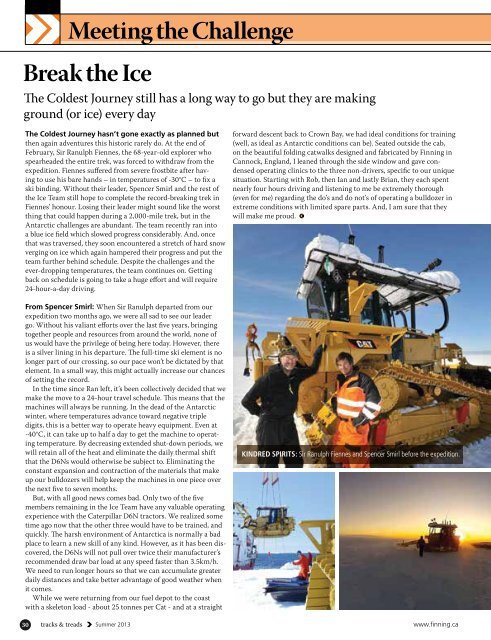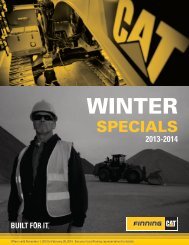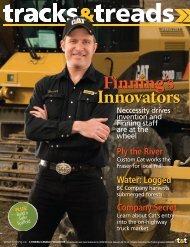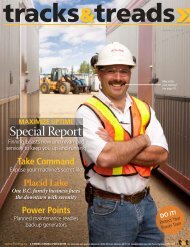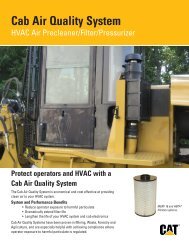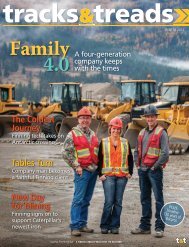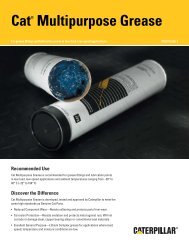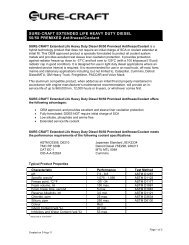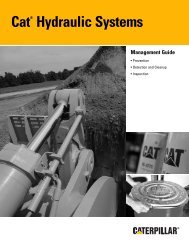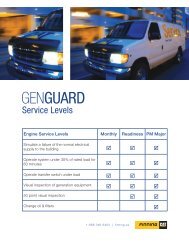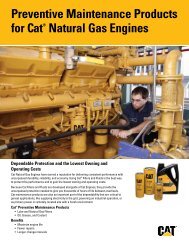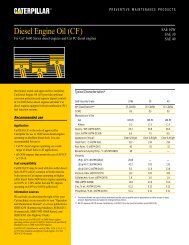Summer 2013 (4.43MB, PDF) - Finning Canada
Summer 2013 (4.43MB, PDF) - Finning Canada
Summer 2013 (4.43MB, PDF) - Finning Canada
- No tags were found...
You also want an ePaper? Increase the reach of your titles
YUMPU automatically turns print PDFs into web optimized ePapers that Google loves.
Meeting the ChallengeBreak the IceThe Coldest Journey still has a long way to go but they are makingground (or ice) every dayThe Coldest Journey hasn’t gone exactly as planned butthen again adventures this historic rarely do. At the end ofFebruary, Sir Ranulph Fiennes, the 68-year-old explorer whospearheaded the entire trek, was forced to withdraw from theexpedition. Fiennes suffered from severe frostbite after havingto use his bare hands – in temperatures of -30°C – to fix aski binding. Without their leader, Spencer Smirl and the rest ofthe Ice Team still hope to complete the record-breaking trek inFiennes’ honour. Losing their leader might sound like the worstthing that could happen during a 2,000-mile trek, but in theAntarctic challenges are abundant. The team recently ran intoa blue ice field which slowed progress considerably. And, oncethat was traversed, they soon encountered a stretch of hard snowverging on ice which again hampered their progress and put theteam further behind schedule. Despite the challenges and theever-dropping temperatures, the team continues on. Gettingback on schedule is going to take a huge effort and will require24-hour-a-day driving.From Spencer Smirl: When Sir Ranulph departed from ourexpedition two months ago, we were all sad to see our leadergo. Without his valiant efforts over the last five years, bringingtogether people and resources from around the world, none ofus would have the privilege of being here today. However, thereis a silver lining in his departure. The full-time ski element is nolonger part of our crossing, so our pace won’t be dictated by thatelement. In a small way, this might actually increase our chancesof setting the record.In the time since Ran left, it’s been collectively decided that wemake the move to a 24-hour travel schedule. This means that themachines will always be running. In the dead of the Antarcticwinter, where temperatures advance toward negative tripledigits, this is a better way to operate heavy equipment. Even at-40°C, it can take up to half a day to get the machine to operatingtemperature. By decreasing extended shut-down periods, wewill retain all of the heat and eliminate the daily thermal shiftthat the D6Ns would otherwise be subject to. Eliminating theconstant expansion and contraction of the materials that makeup our bulldozers will help keep the machines in one piece overthe next five to seven months.But, with all good news comes bad. Only two of the fivemembers remaining in the Ice Team have any valuable operatingexperience with the Caterpillar D6N tractors. We realized sometime ago now that the other three would have to be trained, andquickly. The harsh environment of Antarctica is normally a badplace to learn a new skill of any kind. However, as it has been discovered,the D6Ns will not pull over twice their manufacturer’srecommended draw bar load at any speed faster than 3.5km/h.We need to run longer hours so that we can accumulate greaterdaily distances and take better advantage of good weather whenit comes.While we were returning from our fuel depot to the coastwith a skeleton load - about 25 tonnes per Cat - and at a straight30 tracks & treads <strong>Summer</strong> <strong>2013</strong>forward descent back to Crown Bay, we had ideal conditions for training(well, as ideal as Antarctic conditions can be). Seated outside the cab,on the beautiful folding catwalks designed and fabricated by <strong>Finning</strong> inCannock, England, I leaned through the side window and gave condensedoperating clinics to the three non-drivers, specific to our uniquesituation. Starting with Rob, then Ian and lastly Brian, they each spentnearly four hours driving and listening to me be extremely thorough(even for me) regarding the do’s and do not’s of operating a bulldozer inextreme conditions with limited spare parts. And, I am sure that theywill make me proud.Kindred spirits: Sir Ranulph Fiennes and Spencer Smirl before the expedition.www.finning.ca


